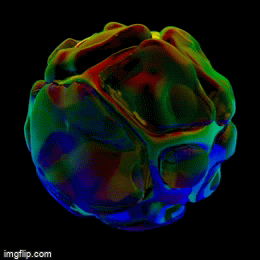

Others have subsequently reported earlier observations of cognitive impairment, including deficits in the Morris Water maze at seven months of age ( Serneels et al., 2009). The first publication characterizing these mice reported that they exhibited impaired reversal learning of a food-rewarded four-arm spatial maze task at eight months of age ( Radde et al., 2006). CSF concentrations of total tau increase in these animals, starting at six months and reaching a 5-fold increase by 18 months of age. Aβ40 concentrations also decrease, but less dramatically (45 percent by 18 months). Aβ42 concentrations in CSF of these mice decrease with age, with a 50 percent reduction by six months of age and an 80 percent reduction by 18 months. The CSF levels of Aβ and tau have also been extensively examined in these mice ( Maia et al., 2013). Phosphorylated tau-positive neuritic processes have been observed in the vicinity of all congophilic amyloid deposits, but no fibrillar tau inclusions are seen. Deposits appear in the hippocampus at about three to four months, and in the striatum, thalamus, and brainstem at four to five months. Amyloid plaque deposition starts at approximately six weeks of age in the neocortex. In the brain, the Aβ42/Aβ40 decreases with the onset of amyloid deposition ( Radde et al., 2006 Maia et al., 2013). Human Aβ42 is preferentially generated over Aβ40, but levels of both increase with age.

In these mice, expression of the human APP transgene is approximately 3-fold higher than endogenous murine APP. "By focusing on cannabinoids and terpenes, we can focus on what the future of medical cannabis looks like.Species: Mouse Genes: APP, PSEN1 Mutations: APP KM670/671NL (Swedish), PSEN1 L166P Modification: APP: Transgenic PSEN1: Transgenic Disease Relevance: Alzheimer's Disease Strain Name: B6.Cg-Tg(Thy1-APPSw,Thy1-PSEN1*L166P)21Jckr Genetic Background: C57BL/6J Availability: Available through Mathias Jucker SummaryĪPPPS1 mice contain human transgenes for both APP bearing the Swedish mutation and PSEN1 containing an L166P mutation, both under the control of the Thy1 promoter. Nobody knows what categories they go in other than indica and sativa," said Goldstein. "There are 1,000 strains out on the market. Meanwhile, knowing the exact chemical makeup and strain of the weed being used could help make the medical marijuana industry as precise as possible.
#STRAIN BRAIN APP FULL#
The full effect is in the entourage effect." That is, all the chemicals in cannabis - cannabinoids like THC, CBD, CBG and CBN, in addition to aromatic chemicals called terpenes - work synergistically to bring about the plant's full effect.
#STRAIN BRAIN APP PROFESSIONAL#
Martha Montemayor, head of Cannabis Clinicians Colorado, a nonprofit professional groups that trains doctors in cannabis. Don't worry about strain names,'" said Dr. "We tell our patients, 'Look at lab test results on the medicine. But some medical marijuana providers say that may not be the most important factor.

Then we begin specific cannabinoid therapy and the physician monitors it ," said HJ Raza, MD/PhD, chief medical officer of Potbotics.Įventually, patients may be able to rely more on chemical profiles and test results, rather than strain reputations. We do a baseline study to find evidence of that on the EEG. Let's say a patient comes in complaining of insomnia. "When physicians have the equipment, it can validate information for them. The app, which was refined and launched last month, is also connected to "BrainBot", a device that measures brain activity and helps patients determine their responses to different strains or cannabinoids. Potbotics educates patients about cannabis' effects on their ailments and the cannabinoid profiles specific to each strain."There's such a fine line right now between medical and recreational adult use cannabis for patients or consumer," Goldstein said, "Adult use focuses more on taste, flavor, and smell, while medical cannabis patients have a different set of considerations, such as 'how will this affect my fibromyalgia, glaucoma, or migraines?"


 0 kommentar(er)
0 kommentar(er)
